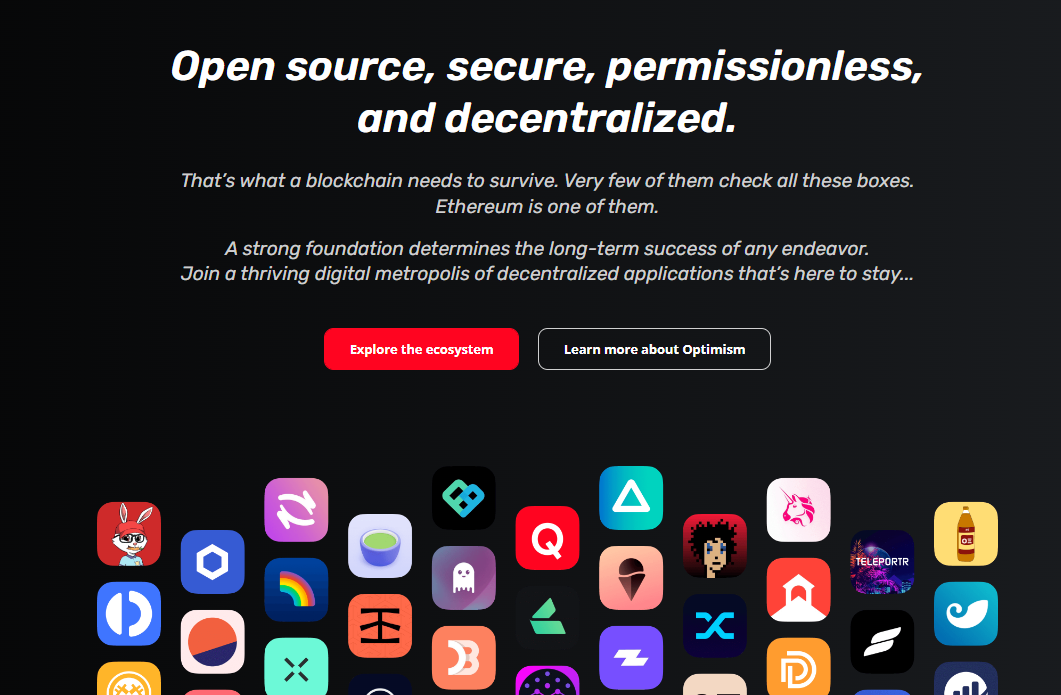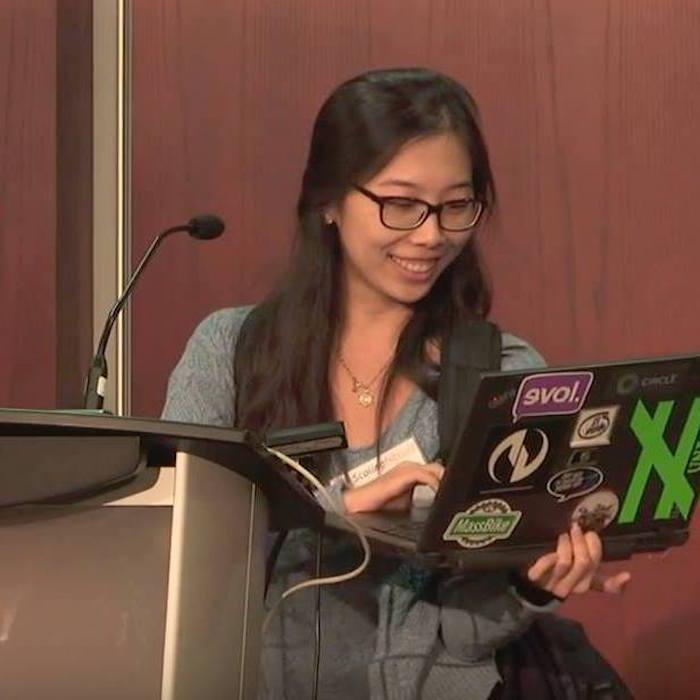บทความ
OP หรือ Optimism เหรียญที่ช่วยให้ Ethereum ปังยิ่งกว่าเดิม

ใครที่เคยโอนเหรียญหรือใช้แอปพลิเคชันบนเครือข่าย Ethereum น่าจะค่อนข้างหนักใจกับค่าธรรมเนียมและระยะเวลาที่ค่อนข้างสูง นั่นเพราะว่า Ethereum เป็นเครือข่ายที่ได้รับความนิยมอันดับต้น ๆ เมื่อพูดถึงการทำธุรกรรมผ่านบล็อกเชน
ปัญหาความล่าช้าของ Ethereum นี่เองที่ทำให้นักพัฒนาพยายามช่วยกันหาวิธีแก้ไข ผลลัพธ์ที่ได้ก็คือการพัฒนา Layer-2 ซึ่งเหรียญ OP หรือ Optimism ก็คือหนึ่งใน Layer-2 ที่น่าสนใจที่สุดตัวหนึ่ง และบทความนี้จะพาคุณมารู้จักกับ OP ให้มากขึ้น!
OP คืออะไร?

OP คือเหรียญประจำเครือข่าย Optimism ที่เป็นเครือข่าย Layer-2 บน Ethereum โดยเหรียญ OP ทำหน้าที่เป็น Governance Token ที่มอบสิทธิ์ให้ผู้ถือสามารถมีส่วนร่วมกับการบริหารเครือข่ายผ่านฟีเจอร์ Optimism Collective โดยมีวัตถุประสงค์เพื่อพัฒนาระบบนิเวศ (Ecosystem) ที่ยั่งยืนสำหรับ Ethereum
Optimism คืออะไร?
Optimism คือเครือข่ายบล็อกเชน Layer-2 ที่ทำหน้าที่สนับสนุนและแบ่งเบาภาระให้กับเครือข่าย Layer-1 อย่าง Ethereum โดย Optimism ถูกออกแบบมาให้เป็น Layer-2 ที่เป็นมิตรกับผู้ใช้และสามารถเติบโตได้อย่างยั่งยืนที่สุดเครือข่ายหนึ่ง

ผู้สร้าง Optimism
Optimism ถูกพัฒนาโดย Optimism Foundation องค์กรไม่แสวงหาผลกำไรที่ก่อตั้งขึ้นเพื่อพัฒนาเครือข่าย Optimism และสนับสนุนระบบนิเวศ (Ecosystem) ของ Ethereum ให้มีความปลอดภัยสูงขึ้น
ข้อมูลจาก Crunchbase แสดงให้เห็นว่า Optimism มีผู้ร่วมก่อตั้งด้วยกัน 3 คน ได้แก่ Jinglan Wang, Karl Floersch, และ Kevin Ho

1.Jinglan Wang — Co-Founder & Chief Executive Officer
นอกจากจะเป็นผู้ร่วมก่อตั้งและ CEO ของ Optimism แล้ว เธอยังเป็นผู้บริหารระดับสูงให้กับ Blockchain Education Network อีกด้วย โดยเธอเริ่มรู้จักกับคริปโทเคอร์เรนซีตั้งแต่สมัยที่เธอยังศึกษาอยู่ที่ MIT (Massachusetts Institute of Technology) จากนั้นเธอก็ได้รับรับหน้าที่เป็น Blockchain Product Manager ที่ Nasdaq และยังเคยร่วมก่อตั้ง Eximchain สตาร์ทอัพที่ทำเกี่ยวกับการเงิน

2.Karl Floersch — Co-Founder & Chief Technology Officer
ดำรงตำแหน่งเป็น CTO ให้กับ Optimism ซึ่งเขาเป็นผู้ที่มีความเชี่ยวชาญเกี่ยวกับการผลิตภัณฑ์ที่เกี่ยวกับบล็อกเชน โดยเฉพาะ Erthereum และเคยร่วมกับบริษัทระดับโลกอย่าง Macy’s และ SC Johnson ในฐานะ Software Engineer อีกด้วย

3.Kevin Ho — Co-Founder & Protocol Product Manager
Optimism ทำงานอย่างไร?
เราสามารถอธิบายหลักการทำงานแบบง่าย ๆ ของ Optimism หรือ Layer-2 ได้คือ Layer-2 จะทำหน้าที่ประมวลผลและยืนยันธุรกรรมขนาดเล็ก ก่อนที่จะสรุปและรวบรวมธุรกรรมทั้งหมดเพื่อส่งเข้าไปอยู่บน Ethereum ตามระยะเวลาที่กำหนด วิธีนี้ส่งผลให้การทำธุรกรรมผ่าน Optimism ได้เปรียบทั้งความเร็วที่สูงและค่าธรรมเนียมที่ต่ำกว่า Layer-1
ลองนึกภาพว่าเราต้องการส่งของให้เพื่อน 5 อย่าง แทนที่จะแบ่งแพ็คของออกเป็น 5 กล่อง เราก็จับของทั้ง 5 อย่างมาอยู่ในกล่องเดียวกัน จากนั้นก็นำไปให้บริษัทขนส่งจัดการต่อ วิธีนี้ทำให้เราสามารถประหยัดทั้งอุปกรณ์แพ็คของกับค่าขนส่ง ขณะที่บริษัทขนส่งเองก็ทำงานได้ง่ายขึ้นเช่นกัน ซึ่งนี่ก็คือแนวคิดของ Layer-2
นอกจากนี้ Optimism ยังใช้ระบบที่เรียกว่า Optimistic Rollups (ORs) ในการยืนยันธุรกรรม โดยระบบนี้มีหลักการทำงานคือ ทั้งเครือข่ายจะถือว่าทุกธุรกรรมที่เกิดขึ้นบนเครือข่ายเป็นธุรกรรมที่ถูกต้องทั้งหมด ซึ่งก็เป็นไปตามชื่อ Optimistic (มองโลกในแง่ดี) ทำให้ข้อมูลธุรกรรมมีขนาดเล็ก สามารถรวบรวมส่งให้ Layer-1 ได้เยอะและเร็วยิ่งขึ้น
ถึงตรงนี้อาจเกิดคำถามว่า “แล้วถ้ามีธุรกรรมที่ไม่น่าเชื่อถือล่ะ?” ซึ่งสำหรับจุดนี้ Optimism มีระบบจัดการโดยให้ผู้ใช้ในเครือข่ายสามารถฟ้องได้ว่ามีธุรกรรมที่ไม่น่าเชื่อถือ จากนั้นเครือข่ายจะช่วยกันตรวจสอบความถูกต้องของธุรกรรมนั้น หากตรวจสอบแล้วพบว่าเป็นธุรกรรมที่ผิดจริง ผู้ที่ส่งธุรกรรมจะถูกหักโทเคน OP ที่ค้ำประกันไว้ และโทเคนก็จะถูกมอบเป็นรางวัลให้กับคนที่ฟ้องเข้ามา จากนั้นเครือข่ายก็จะทำการย้อนกลับเป็นบล็อกก่อนหน้าธุรกรรมนั้น
การกระจายเหรียญ OP
เหรียญ OP ถูกสร้างออกมาโดยมีจำนวนเริ่มต้นที่ 4,294,967,296 OP แต่ไม่มีการจำกัดอุปทานสูงสุดแต่อย่างใด และจำนวนเหรียญจะเฟ้อขึ้นปีละ 2% โดยประมาณเพื่อให้เพียงพอกับความต้องการของผู้ใช้ได้ สำหรับรายละเอียดของการกระจายเหรียญ มีดังนี้

25% Ecosystem Fund
เหรียญในส่วนนี้ถูกแบ่งไว้เป็นงบประมาณสำหรับพัฒนาระบบนิเวศ (Ecosystem) ของ Optimism
20% Retroactive Public Goods Funding (RetroPGF)
เหรียญในส่วนนี้ถูกแบ่งไว้เพื่อเป็นรางวัลสำหรับผู้ใช้ที่มีส่วนร่วมกับเครือข่าย
19% User airdrops
เหรียญในส่วนนี้ถูกแจกจ่ายให้กับผู้ที่มีส่วนสนับสนุนเครือข่าย
19% Core contributors
เหรียญในส่วนนี้ถูกแบ่งให้กับผู้ที่มีส่วนร่วมพัฒนาเครือข่ายอย่างมีนัยสำคัญ
17% Sugar xaddies
เหรียญในส่วนนี้ถูกแบ่งให้กับนักลงทุนกลุ่มแรก ๆ
อ้างอิง: Optimism, Optimism Docs, Coindesk, Coinmarketcap
_________________________________________
ติดตามความรู้เพิ่มเติม ได้ที่ Bitkub หรือ Bitkub Blog ของเรา
- มาเรียนรู้เรื่อง บิตคอยน์ (Bitcoin) และ Cryptocurrency ที่จะช่วยให้คุณเข้าใจโลกของคริปโทฯ ได้ดีขึ้น ที่ Bitkub Blog และหากคุณยังเป็นมือใหม่ ค้นหาข้อมูลเพิ่มเติมได้ในบทความ “แหล่งความรู้ มือใหม่หัดเทรดคริปโต เริ่มต้นที่นี่”
*คริปโทเคอร์เรนซีและโทเคนดิจิทัลมีความเสี่ยงสูง ท่านอาจสูญเสียเงินลงทุนได้ทั้งจํานวน โปรดศึกษาและลงทุนให้เหมาะสมกับระดับความเสี่ยงที่ยอมรับได้
***ผลตอบแทนของสินทรัพย์ดิจิทัลในอดีตหรือผลการดําเนินงานในอดีต มิได้เป็นสิ่งยืนยันถึงผลตอบแทน ของสินทรัพย์ดิจิทัลหรือผลการดําเนินงานในอนาคต
_________________________________________
OP or Optimism the Coin that Optimizes Ethereum

If you have used Ethereum to do any transactions, you are probably aware of its fluctuated gas fee and delayed transactions. This is due the popularity of Ethereum as one of the top public blockchain networks.
The problems are exactly why developers have been working hard to find the solutions. One promising method is to create the Layer-2 networks and Optimism is one of such. In this article we will learn more about layer-2 and how OP or Optimism works.
What is OP?

OP is the native currency of Optimism, the layer-2 network of Ethereum. OP’s main purpose is being the governance token that grant its holders the right to participate in network’s governance via the Optimism Collective feature with the goal to further improve Ethereum’s ecosystem.
What is Optimism?
Optimism is a layer-2 blockchain network of Ethereum or layer-1. Optimism’s purpose is to lighten the workload from Ethereum and is designed to be one of the most user-friendly and sustainable networks.

Optimism Creators
Optimism is developed by Optimism Foundation, a non-profit organization that is founded with the mission to support and secure Ethereum’s ecosystem.
According to Crunchbase, Optimism has 3 co-founders: Jinglan Wang, Karl Floersch, and Kevin Ho

1.Jinglan Wang — Co-Founder & Chief Executive Officer
In addition to being the Co-Founder and CEO of Optimism, she is an executive director at Blockchain Education Network. She has known cryptocurrency since her education at MIT (Massachusetts Institute of Technology), after that she worked as Blockchain Product Manager at Nasdaq and co-founded Eximchain, a financial startup.

2.Karl Floersch — Co-Founder & Chief Technology Officer
Karl is the CTO at Optimism. He is an expert when it comes to blockchain related products, especially Ethereum. He has worked as Software Engineer at leading organizations such as Macy’s and SC Johnson as well.

3.Kevin Ho — Co-Founder & Protocol Product Manager
How does Optimism Work?
Simply explained, Optimism and most of the layer-2 networks are designed to reduce the workload from the main network (Layer-1) by processing numerous small transactions before compressing them into one transaction and sending it to be confirmed and recorded on the main network. This is why doing transactions on layer-2 offer more speed and lower gas fee when compared to layer-1.
Try to imagine that you want to send 5 items to your friend, instead of separating the items into 5 different boxes, you just put them all together in one box and ship it. This can reduce the cost of packaging and ease some workload of the shipper. This is the idea of layer-2 such as Optimism.
In addition, Optimism uses the system called Optimistic Rollups (ORs) to confirm transactions. As the name suggests this system will consider all transactions on the network to be valid and trustworthy. This way the data package can be smaller, meaning more transactions can be processed.
However, you might have a question, “What if there are untrustworthy transactions?”. To counter this problem, Optimism allows nodes to report any suspicious transactions then every node will participate to find out whether that transaction is actually valid or not. If the transaction is fraud, the node that submits the transaction will be punished by deducting the staked OP, the deducted OP will then be rewarded to the reporter and blockchain will revert to the block prior to the fraud.
OP Allocation
OP was generated with initial supply of 4,294,967,296 OP without maximum supply limit. The coins will inflate about 2% per year to meet the demand of users. While the allocation of the OP is as follows;

25% Ecosystem Fund
The Ecosystem Fund is meant to stimulate development of the ecosystem.
20% Retroactive Public Goods Funding (RetroPGF)
RetroPGF is the mechanism that aims to provide reward for users who interact with the network in specific ways.
19% User airdrops
A series of airdrops to reward users for specific helpful behaviors.
19% Core contributors
The people who’ve been working tirelessly to develop Optimism.
17% Sugar xaddies
Group of early investors
Reference: Optimism, Optimism Docs, Coindesk, Coinmarketcap
_________________________________________
Follow additional knowledge on Bitkub or our Bitkub Blog
Let’s learn about Bitcoin and Cryptocurrency. To help you better understand the world of crypto at Bitkub Blog and if you are a beginner. Find out more in the article.
— Cryptocurrency and digital tokens involve high risks; investors may lose all investment money and should study information carefully and make investments according to their own risk profile.
— Returns/Past Performance does not guarantee future returns/performance.
ที่มา:
Medium